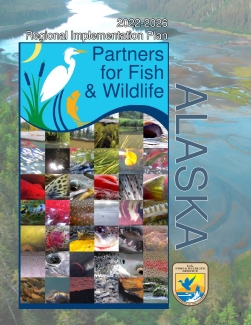Document - application/pdf

2022-2026 Regional Implementation Plan for Alaska Partners for Fish and Wildlife Program.
Attachments
| Attachment | Size |
|---|---|
| PFW 2022_2026_FINAL_070822.pdf7.4 MB | 7.4 MB |
Type of document
Plan
Facility
Program
FWS and DOI Region(s)

2022-2026 Regional Implementation Plan for Alaska Partners for Fish and Wildlife Program.
| Attachment | Size |
|---|---|
| PFW 2022_2026_FINAL_070822.pdf7.4 MB | 7.4 MB |